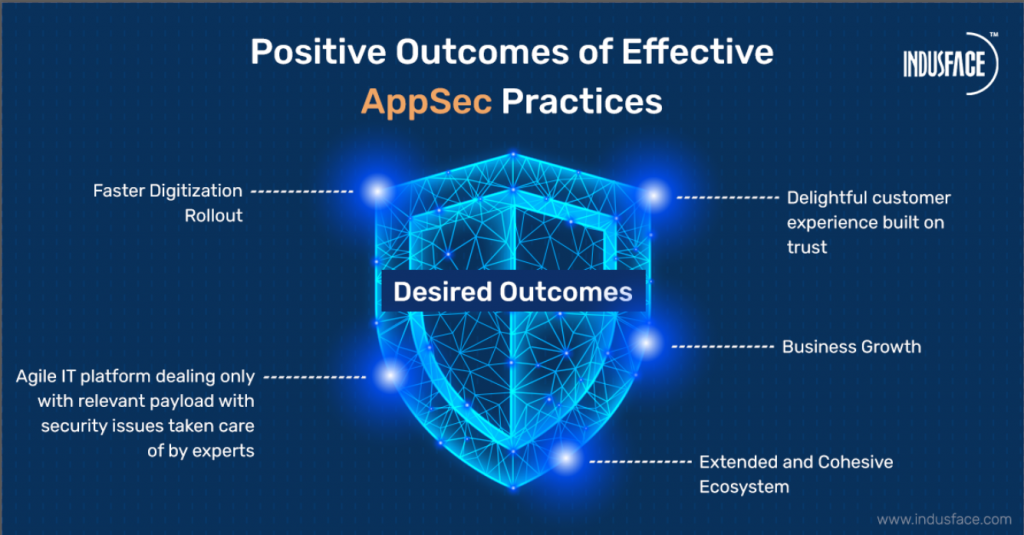Why Is Application Security Important To Vulnerability Management?
Vulnerability Management (VM) is the continuous process of identifying, prioritizing, remediating, and mitigating vulnerabilities in the organization’s IT environment which includes applications, software, networks, systems, and third-party services. Effective VM is critical to pre-emptively and proactively protecting against exploitation of such vulnerabilities. You must be wondering why application security is important, especially to vulnerability management when it is such a comprehensive and continuous process.
Application security and vulnerability management are important to one another. Together, they make the security process more proactive, intelligent, and agile. In this article, we explore why application security is important to vulnerability management.
What Is Application Security?
Application security is a combination of best practices, processes, functions, features, tools, and controls used to make the application/ software more secure. It includes the detection, prevention, and remediation of threats from attackers, minimizing the risks of attacks and data breaches. It is an ongoing process, not a one-and-done thing or a once-a-year event.
Traditional perceptions relegated application security to a compliance necessity. Today, app security is indispensable from the business, financial and brand angles. It enables organizations to stay ahead of emerging sophisticated threats and threat actors. When integrated into the SDLC stages itself, it enables organizations to start clean and build secure-by-design apps.
Application security solutions may include firewalls, Web App Firewalls (WAFs), secure coding policies, anti-virus and anti-malware software, access controls, data encryption, compliance auditing, intrusion detection, SIEM technology, analytics, monitoring tools, runtime application self-protection and so on.

The best application security solutions are tailored, comprehensive, always-on, intelligent and leverage advanced, self-learning, automated technology in combination with the expertise of security experts. They help infuse speed, agility, scalability, and transparency into security programs.
Why Is Application Security Important to Vulnerability Management?
Application vulnerability management, when implemented properly, is a comprehensive process that seeks to identify, prioritize, remediate, and mitigate vulnerabilities, gaps, security weaknesses and misconfigurations. After all, it is through these security loopholes that attackers gain access to the organization’s data and other assets.
Gaining an Active Threat Context
What are organizations trying to achieve through their vulnerability management process? It is not just to scan assets and identify vulnerabilities that are already present within the IT environment but to know what threats exist and what are the emerging trends that could create new vulnerabilities. The VM team should not have to rescan every single asset to assess if a zero-day vulnerability exists within the organization when news of such a vulnerability breaks out.
So, the application vulnerability management process would be highly ineffective if organizations were to look at VM without enough context of the threat landscape, security environment and real-time IT developments. Application security is important to VM because it provides the much-needed context to the process. Put differently, effective application security helps strengthen vulnerability management.
With intrusion detection systems, traffic monitoring, threat detection, intelligence, and security analytics, among others, organizations get an understanding of the current and emerging threats. They can understand how and why vulnerabilities are exploitable. This sort of context and intelligence empowers them to proactively prevent threats from exploiting vulnerabilities while being better prepared for emerging threats.
Minimizing The Possibilities of Vulnerabilities from the SDLC Stages
As discussed in the previous section, the integration of application security at the SDLC stages enables organizations to build applications that are secure by design. Given the need for speed and agility in the app development cycle, testing and detecting vulnerabilities at the later stages of development means developers do not have the time or resources to remediate/ mitigate them and the app security suffers.
Instead, if secure coding practices are followed, security misconfigurations can be avoided. When the app security policies mandate the use of secure frameworks, themes, plugins, databases and libraries, then organizations are building apps that do not have vulnerabilities permeating from the use of open-source, insecure components. This is why application security is important to vulnerability management.
Gaining Intelligence and Insights for Decision Making
Even after the application has gone into production, application security enables organizations to gather intelligence from assets proactively, assessing the risks and instantly remediating them.
For instance, intelligent security solutions scan mobile and IoT devices to look for malware or other insecure/ illegitimate/ malicious apps that could be leveraged by attackers to create backdoors and gain access to mission-critical resources and data. When the CISO is presented with this information, they can reshape their VM policies.
Through the 24×7 visibility into the security posture using security tools such as WAFs, threat detection, etc., CISOs gain critical real-time actionable insights on risks necessary to make quick and informed decisions to strengthen their VM process. They can better prioritize and address those areas that matter the most.
The Way Forward
Integrating application security with vulnerability management is massively beneficial to organizations. Leverage one of the comprehensive, intelligent and managed app security solutions from Indusface to strengthen your VM program.


 October 19, 2021
October 19, 2021






